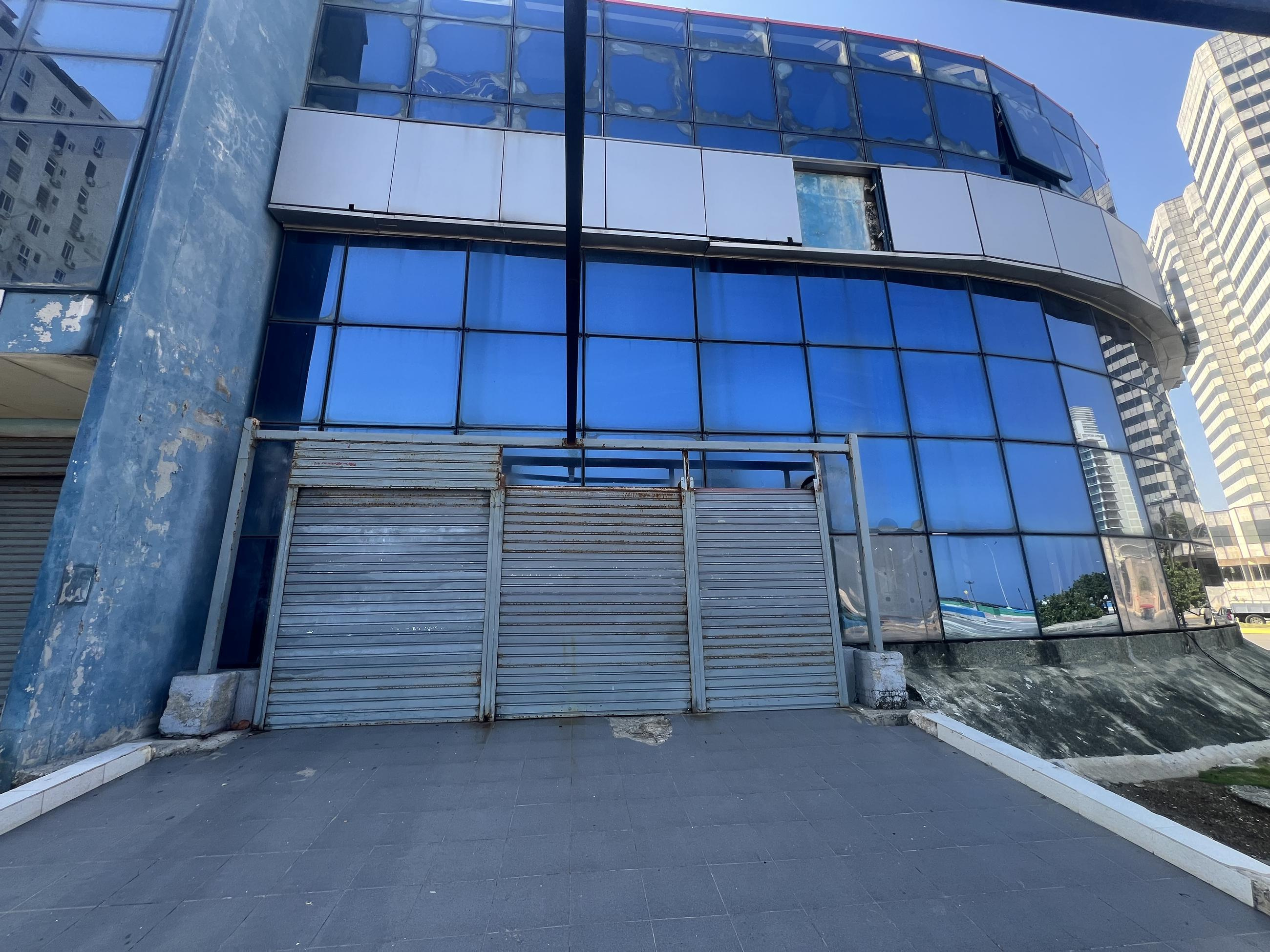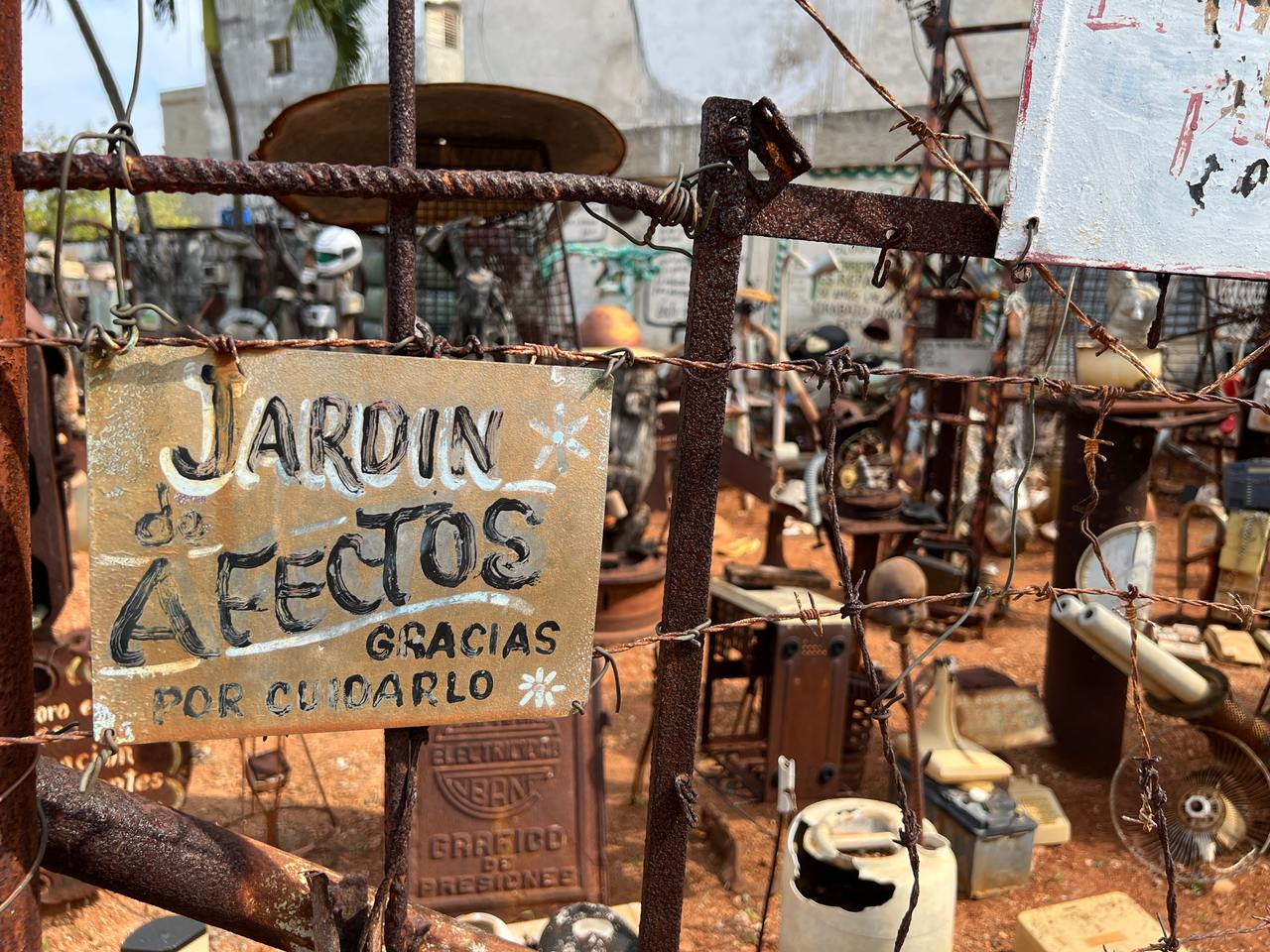Aguilar Medrado asked to speak with the mayor, but they sent him the police and state security.

![]() 14ymedio, José Lassa, Havana, 19 June 2025 – Lázaro Aguilar Medrano’s patience came to an end this Thursday. The resident of Calle Aguiar/Muralla in Old Havana cut off the traffic in the morning demanding a reply from the authorities to his claim about the poor condition of his home. However, in place of council officials it was the police and State Security who turned up, this newspaper was able to confirm.
14ymedio, José Lassa, Havana, 19 June 2025 – Lázaro Aguilar Medrano’s patience came to an end this Thursday. The resident of Calle Aguiar/Muralla in Old Havana cut off the traffic in the morning demanding a reply from the authorities to his claim about the poor condition of his home. However, in place of council officials it was the police and State Security who turned up, this newspaper was able to confirm.
Aguilar Medrado stopped the traffic using an old armchair, a mattress, a bed frame, a washing machine, a sign containing his demands, a motorcycle and some containers that his family uses for stockpiling water in this, one of the municipalities worst affected by poor water supply in the whole city. “I want the government here. Because it’s got beyond a joke now and I’m not going to talk to anyone else”, he declared in a video released by CubaNet.
In the recording, Aguilar Medrano demands the presence of Alexis Acosta Silva, administrator for the Old Havana district, as well as the city’s governor Yanet Hernández Pérez. “The block is going to be closed off until the government comes here”, he insisted. The man referred to the lack of replies to his requests for solving his family’s problems on the part of the Institute for Housing, the Communist Party and other provincial and municipal bodies.

The man also made mention of his mother, Estrella Medrano López. According to him, the woman obtained numerous medals and awards throughout her life: “And Estrella has a thousand medals, a thousand pieces of s**t, a thousand… Well, F**k all that” and he went on to say how abandoned the people feel who, in their younger days, actually helped to build the current political model of the country. “And for what party? For which government? Close them down. Because they don’t function. They don’t function”, he said. continue reading
After one o’clock in the afternoon, when we visited the scene, Aguilar had already been detained by officials and a police car remained parked outside his house. Some graffiti on the front of a neighbouring building almost on ruins assured us: “All we need is love”.

The protestor’s things had been removed from the street and stacked on the pavement in front of his house. Although the man was no longer present, his neighbours remained watching the scene of the police operation which included patrol vehicles, uniformed and plain clothes officers who watched from the street corners. The deployment command post was located in the local Municipal Electoral Commission, right on the same corner.
The exterior of Aguilar Medrano’s home, probably built at the start of the last century, shows the poor state of construction in which he is living – after decades of neglect, lack of resources available to the inhabitants, and overcrowding owing to housing problems. In a photo posted to his Facebook page you can see that his building also makes use of an old makeshift wooden “barbecue” [a sleeping platform built inside the room] to maintain the vertical space. On the same block there are also signs of multiple building collapses.
Calle Aguiar isn’t just any old Havana street. From its beginnings at the Avenida de las Missiones it goes into the city via some fifteen blocks. In its early days it was home to the headquarters or branches of at least nine banks, such that it became one of the epicentres of the financial district of Cuba’s capital, the little Wall Street of the island. All of these businesses were nationalised after Fidel Castro came to power in January 1959.

There were also numerous insurance companies in Calle Aguiar, as well as various commercial associations like the British Chamber of Commerce, the Association of Cuban Banks and the National Chamber of Business and Industry. In its buildings, up to 105 law firms, beauty salons, small tailors and sheet manufacturing industries were located. Its commercial and financial activity was so great that it earned the name “money street“.
The blocking off of streets, be it to protest the poor state of housing or to protest the lack of water supply, has become increasingly common in Cuba in recent years. In Havana it is common to see lines of women who block the traffic to demand either a solution to their housing problems or the provision of a water truck to alleviate the lack of mains supply.
Translated by Ricardo Recluso
____________
COLLABORATE WITH OUR WORK: The 14ymedio team is committed to practicing serious journalism that reflects Cuba’s reality in all its depth. Thank you for joining us on this long journey. We invite you to continue supporting us by becoming a member of 14ymedio now. Together we can continue transforming journalism in Cuba.































































